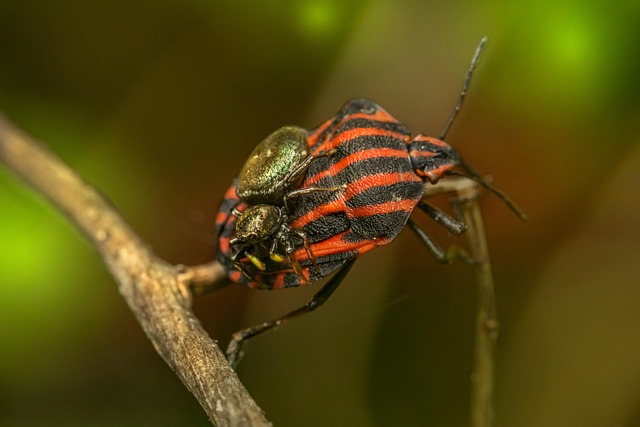Sowbugs exhibit pronounced seasonal activity, peaking from spring to fall, with peak population in late summer. Homeowners and professionals should anticipate infestations by understanding these patterns influenced by temperature. Identification signs include pinholes, chewed plant material, and nocturnal behavior. Professional removal requires strategic approaches, including inspection, targeted treatments, sealing entry points, and regular maintenance. Preventative measures involve sealing cracks and gaps, weatherstripping, door sweeps, proper sanitation, and tailored professional strategies for significant risk reduction.
“Unraveling the seasonal behavior of sowbugs is key to effective pest management. This article guides you through understanding these critters’ patterns, identifying signs of an infestation, and implementing proven strategies for professional sowbug removal. We’ll delve into the ‘when’ and ‘why’ behind their appearances, helping you spot potential issues early on. Additionally, learn valuable preparation tips to safeguard your space, ensuring a sowbug-free season ahead. For comprehensive solutions, explore our insights on professional sowbug removal.”
Understanding Sowbug Seasonal Patterns: When and Why They Appear
Understanding Sowbug Seasonal Patterns: When and Why They Appear
In the context of professional sowbug removal, it’s essential to recognize that sowbugs, also known as armadillos, exhibit distinct seasonal patterns. These insects are most active during the warmer months, typically from spring to fall. Their presence peaks in late summer when they reach maturity and start seeking new habitats or food sources. This seasonal behavior is a key factor for homeowners and pest control professionals to consider when preparing for potential infestations.
The reasons behind these patterns are tied to sowbugs’ life cycles and environmental conditions. Warmer temperatures facilitate their growth, reproduction, and survival. As the seasons change, they migrate in search of food, water, and suitable nesting sites. Understanding these seasonal shifts not only helps in predicting when to expect sowbug activity but also informs effective strategies for their control.
Identifying Signs of Sowbug Infestation: What to Look For
Identifying a sowbug infestation is the first step towards effective professional sowbug removal. These tiny, wingless crustaceans tend to be active during specific seasons, making their presence more noticeable during certain times of the year. Homeowners should keep an eye out for signs of an invasion, especially in damp, dark areas like basements, crawl spaces, and under debris. Common indicators include small pinholes in packaging or fabric, chewed plant material, and visible sowbugs scurrying about.
One key way to confirm an infestation is by observing their behavior. Sowbugs are nocturnal and tend to hide during the day, so spotting them scurrying across floors or walls at night is a strong indicator of an active colony nearby. Additionally, their egg cases, which resemble small white eggs with a silky coating, can be found in hidden corners, further confirming the presence of these pests.
Professional Sowbug Removal: Effective Strategies and Tips
Professional sowbug removal requires a strategic approach due to these insects’ adaptability and resilience. As seasoned professionals know, understanding their seasonal patterns is key to successful eradication. Sowbugs thrive in moist, dark environments, often seeking shelter under rocks, logs, or debris during the warmer months. They become more active as temperatures drop, migrating indoors through cracks and crevices in search of food and shelter. This knowledge allows experts to target their efforts during specific times of the year when sowbug activity is at its peak.
Effective professional sowbug removal strategies involve a multi-step process. First, conduct a thorough inspection to identify entry points and active infestations. Next, employ targeted treatments using insecticides or natural repellents, ensuring compliance with safety guidelines. Regular maintenance, including sealing entry points and maintaining proper sanitation, is crucial for preventing reinfestation. Additionally, staying informed about regional sowbug behavior patterns enables professionals to offer tailored solutions, ensuring long-term sowbug control and a more comfortable living environment.
Preventive Measures: Preparing Your Space for Sowbug-Free Seasons
To prepare your space for sowbug-free seasons, start by identifying and addressing potential entry points. These pests are known to seek shelter in dark, damp areas, so ensure that all cracks, gaps, and openings are sealed. Regularly inspect the exterior of your property, focusing on foundations, doors, and windows. Install weatherstripping and door sweeps where needed to prevent these critters from finding their way inside.
Consider implementing a professional sowbug removal strategy by calling in experts who can provide tailored solutions. They may recommend specific treatments or traps based on the unique characteristics of your property. Regular maintenance, including thorough cleaning and proper waste management, also plays a crucial role in deterring sowbugs. By making these preventive measures a part of your seasonal routine, you can significantly reduce the risk of an infestation.
Understanding sowbug seasonal patterns is key to preventing infestations. By recognizing when and where these creatures are most active, you can take proactive steps with effective strategies for professional sowbug removal. Implementing preventive measures like sealing entry points and maintaining a clean environment will ensure a sowbug-free home year-round. Remember, preparation is the best defense against these persistent pests.
